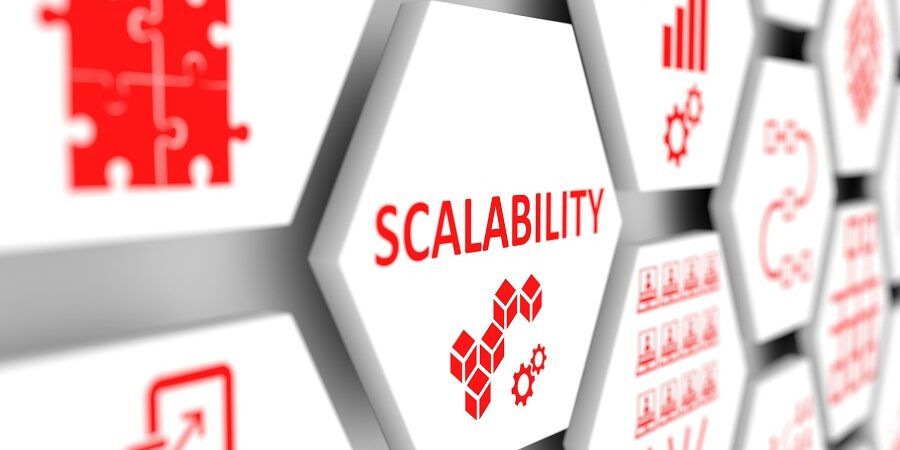zkSync Layer 2 rollup is taking scalability on Ethereum to a new level

The Ethereum network has been known to buckle under seasons of high demand, leading to high gas fees and low transaction throughput. The maximum recorded transaction per second (tps) of the Ethereum blockchain is approximately 87. Comparatively, traditional databases like Oracle Database and Microsoft SQL Server can process thousands of transactions per second.
Several solutions have sprung up to tackle the network’s scalability problems, including rollups, sidechains, state channels, plasma chains, and Validium. Rollups, in particular, has been touted as the endgame for scaling Ethereum, with many companies working on related solutions.
zkSync, a zero-knowledge (ZK) rollup, is one of thve players currently making headlines in the space. Launched by Matter Labs, a proposal to deploy Aave 3 on its 2.0 testnet was recently passed by the Aave DAO.
In this exclusive interview with DAO Times, Anthony Rose, Head of Engineering at Matter Labs, shared some insights on how zkSync is attempting to change the scalability game.
According to Matter Labs, deploying on zkSync could help Aave onboard new users and increase user activity. How exactly does zkSync do this?
zkSync is a Layer 2 rollup that uses advanced cryptography called zero-knowledge proofs to scale Ethereum without compromising on security and decentralization. zkSync is EVM compatible, which means that projects deployed on Ethereum – like Aave – can easily build on zkSync to take advantage of low gas fees and high transaction speeds.
The so-called ‘scalability trilemma’ popularized by Vitalik essentially states that whilst we would like blockchains to be scalable, secure, and decentralized, in reality, you’re forced to compromise on one of these dimensions in order to optimize for the other two. With L2 solutions, we’re able to make substantial progress on this problem and provide an execution environment designed for scale. By deploying on zkSync and leveraging the power of zero-knowledge proofs, Aave can offer their users the ability to transact faster, at low costs, and without compromising security.
Additionally, zkSync is one of the very few protocols to support account abstraction. Account abstraction is a long-discussed topic in the Ethereum community, and essentially provides developers with additional control and flexibility with how they design their applications, and allows for things like the development of smart wallets that can substantially reduce the friction of interacting with a blockchain.
All of these will facilitate the onboarding of the next billion people to the crypto ecosystem and Aave will be in the best position to take advantage.
Apart from enabling lower gas fees and higher transaction throughput, what are the other benefits of zkSync? Are there plans to reward the Aave community now or in the future?
Beyond higher TPS and lower gas fees, zkSync’s Layer 2 solution has the five magic ingredients for scaling Ethereum:
- A general-purpose ZK-rollup: to support general-purpose applications
- EVM-compatible: to enable easy porting from Ethereum and EVM-based chains
- Solidity support: to support the most common language for smart contract developers
- Open source: to protect the freedoms to view, change, or fork the code
- Secure funds: our system is designed to ensure that users maintain control of their assets in a secure way.
That said, while our Layer 2 solution will provide the necessary foundation on top of which the ecosystem can scale Ethereum without degrading its security or decentralization, it is our vision that unlimited scalability, and consequently, mass adoption, will happen in Layer 3 and beyond.
Layer 3 will be an ecosystem of customizable and trustlessly linked blockchains that we refer to as ‘HyperChains’. Eventually, Layer 3 will enable huge progress in our ability to scale these systems, and will provide a platform for use cases that we can’t even imagine today.
There are several players in the DeFi lending space. Why did you choose to onboard Aave? Are there plans to pitch to others?
To date, there are over 150 ecosystem partners that have registered to deploy to zkSync 2.0.
This includes SushiSwap, Uniswap, Aave, Gnosis, Curve, and other DAO-governed (and non-DAO-governed) projects. This could make our Full Launch Alpha the largest and most participated Layer 2 launch yet.
We are a neutral platform that is open and permissionless guided by our mission to accelerate the mass adoption of crypto for personal sovereignty. We welcome everybody and we would support any project deploying on zkSync, in DAOs, DeFi, gaming, NFTs, payments, and much more.
Zero-knowledge (ZK) rollups have been touted as the endgame for scaling Ethereum, a claim that was reiterated in Aave’s governance proposal to deploy on zkSync 2.0. In your opinion, does that mean optimistic rollups are no longer relevant?
We’re very early in Ethereum’s life and even earlier in the life of scaling solutions. Many experiments are being conducted and we think competition is healthy for the ecosystem.
But we also believe zero-knowledge technology has several fundamentally superior characteristics as outlined above.
On October 28, zkSync 2.0 was deployed to the mainnet. Despite the milestone, critics have called out the project for launching “a heavily gated version of the network.” Where exactly is zkSync 2.0 in terms of development, and when will the public have full access to the platform?
On October 28th zkSync 2.0 we deployed “Baby Alpha” to Mainnet, and during this stage, there won’t be external projects or users so that we can put the system through a series of real-money stress tests to help us verify it is working correctly and performing as expected. This represented a huge milestone for us, after months of running the system on testnet, but this is still a very early version of the system we’re aspiring for, of course, although we felt it was vital to get the end-to-end skeleton of the system running. We optimized for building out the critical pieces of the system but a huge amount remains - in particular as we look to improve the system performance and to do whatever we can to ensure it is secure.
As our Chief Product Officer, Steve Newcomb likes to say, we’re kicking the tires of the protocol.
In November, we announced a partnership with OpenZeppelin, a tier-1 security firm. They subsequently published the results of their first zkSync audit (which was focused on our L1 smart contracts) and revealed that they had found zero critical or high-severity issues.
In parallel, we’re running several bug bounty contests and programs. The first one in partnership with Code4rena was recently concluded with a total available bounty of $165,500 USDC. Everyone in this industry is aware of how important security is, given many high-profile incidents. We need to stay paranoid and to ensure we’ve done what we can to reduce risk before really scaling with external users.
To answer your second question, our next big milestone will be Fair Onboarding Alpha, where we welcome all ecosystem projects to start building. After that will be the Full Launch Alpha (Early 2023).
Once we finish our security audits and bug bounties, and our ecosystem has been given the opportunity to deploy their projects on the system, zkSync 2.0 will be open for all users.
There are a lot of layer 2 scaling solutions today. Don’t you think that the problem of composability could arise as the industry continues to mature and more players hit the market?
On the contrary, we specifically designed zkSync 2.0 to allow messaging between Layer 1 and Layer 2 protocols. This ensures there’s communication between chains. There are obvious network effects for these systems though, and I do think that with the composability required by many applications (in particular for DeFi) and the fact that teams will be unlikely to want to seriously fragment liquidity, I assume we’ll likely see a relatively small number of L2s being responsible for the majority of the activity.
On top of what we’re doing at L2, zkSync Layer 3 will be built with native bridges between HyperChains. These are known as HyperBridges and allow for secure transfer and messaging between decentralized applications on different chains.
zkSync has been in production since 2020. How has the project fared since its launch? Are there any notable milestones the protocol has achieved?
We’re very proud of the work that we have done with zkSync 1.0, which has been running smoothly in production for a long time and from which we learned a huge amount, all of which has informed the design of zkSync 2.0.
zkEVMs were previously thought to be years away from coming to fruition, but on October 28th we deployed our EVM-compatible ZK-rollup on Mainnet, initially in a closed environment, but as early as Q1 2023, we’re on track to open it up to the public. We’ve also raised a total of $458 million in a way that allows us to stay mission-driven, and grown the team to almost 100, and there are over 150 projects committed to launch with us.





